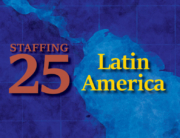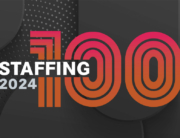Bill rate and mark-up. Increasing presence of VMS. Compressed margins. These are concerns we hear about as we travel the country meeting with staffing companies. When buyers of staffing services try to commoditize our clients with bill rate and mark-up, we teach them to state the following:
“Well I can certainly appreciate the fact that you are looking for the lowest mark-up and bill rate possible. But are we talking bill rate or effective bill rate?
The typical customer response Is, “What do you mean effective bill rate?”
And there is the opportunity we wanted! Now as a staffing professional, you have a tremendous opportunity to educate your customer on the differences between bill rate and effective bill rate. Master the concept of effective bill rate and you will see the trend of compressed margins reversed. You will build stronger relationships with your customers and you will truly become a trusted advisor in the eyes of the client.
What is effective bill rate? It is the fully loaded cost of an employee(s) including onboarding, training, productivity, etc. Too many staffing companies do not understand this concept and they allow themselves to be reduced to bill rate and mark-up. This article shares how two industry leaders are able to overcome bill rate and mark-up objections by discussing the effective bill rate with clients. But first, let’s take a step back and start with the needs and wants of our customers.
What Buyers Want
So what do staffing buyers want from their staffing providers? Our research from hundreds of Voice of the Customer surveys says that staffing buyers want these three things:
- Send me a representative that takes the time to understand my needs and wants.
- Send me only qualified talent.
- Make sure the talent is prepared and knows exactly what is expected of them.
Pretty basic stuff right? Are we delivering on this consistently? Unfortunately, no. It’s evidenced by the declining industry Net Promoter Score NPS. Why? Because very few staffing companies have mapped the two core processes the staffing industry runs on:
- Client Acquisition and Retention Process (“CARP”)
- Talent Acquisition and Retention Process (“TARP”)
Question: In what other industry can a candidate walk into a branch, and get hired the same day? Answer: no other industry that I know of. But in ours, they walk in, complete an application (fog a mirror) provide a couple of references and bam! They are offered a position with one of the staffing company’s best customers. What is wrong with this picture? Unfortunately, if further illustrates that staffing is significantly behind other industries for this primary reason: lack of process.
And process is important. W. Edwards Deming, known as “The man who discovered quality,” drove home the power of process:
Staffing executives who don’t have a strong understanding of process say things like “don’t let the process overtake the purpose.” That is code for a lack of appreciation of process and having an “optional” culture. Anyone who knows anything about process knows the process should deliver the purpose at every single touch point. If the process is not doing so — -it is a bad process and needs to be changed! Process and purpose should never be mutually exclusive and should always deliver on the needs of the client/talent.
Once you map and have a clear understanding of the CARP and TARP processes and how you can minimize variation in each step of the process, you are ready to have the effective bill rate conversation with your customers. First, you must train your sales team on effective questioning so that they can truly understand the customer’s needs and wants. Second, you must train your recruiters on how to effectively qualify the talent and make sure the talent is prepared and knows exactly what is expected of them. The handoff and communication between sales and recruiting is critical.
Calculating effective bill rate. So back to effective bill rate and how to calculate it. Consider logistics staffing. In most warehousing positions, it takes up to two weeks for staffing personnel to be 100% productive. They average about 70% in the first week. At an $11.00 bill rate and 70% productivity the “effective” hourly bill rate is for that employee for week is $15.71. Why? Because the product has to be shipped, so the customer and the staffing companies have to add more staff or pay overtime to get the work done.
Take industry leader Tom Landry, CEO of Allegiance Staffing. Allegiance Staffing prides itself on having approximately 7% turnover in warehousing staff they provide compared to their competitors’ 50% to 70% turnover. “Our proprietary 3-Day, 3-Way hiring process, gives us a real advantage in hiring and retaining the right talent,” Landry says. “We have worked diligently on our talent acquisition and retention process to ensure that we provide the lowest effective bill rate our customers can buy. Our educated customers understand the concept of effective bill rate and are willing to pay a higher bill rate with us because they recognize that their total cost of labor is lower.”
In hospitality staffing, most housekeepers are only 50% productive in the first week. That means a bill rate at $11.50 yields and effective bill rate of $23.00. The rooms still have to be cleaned, right? So, either they hire more staff or pay overtime. Rick Holliday, CEO of industry leader Hospitality Staffing Solutions agrees. “In our business, it can take up to four to six weeks for a housekeeper to come up to full productively, so hiring the right talent to reduce turnover is our top priority. Conducting a realistic job preview is a critical part of our talent acquisition and retention process and has enabled us to significantly reduce our turnover. Even though our bill rate may be higher than our competitors, our effective bill rate is significantly lower. Anyone who understands housekeeper productivity, understands effective bill rate, NOT bill rate and mark-up, is the key to reducing labor costs.”
And this is not limited to lower-end staffing positions. In speaking with a CFO of a major manufacturing company in one of our Voice of the Customer Surveys, the CFO stated it can take up to six months for an accountant to come up to full productivity in his department. He hires mostly temp to perm and will make the call to hire at the six-month mark. Consider for a moment, what is his effective bill rate with a six-month ramp-up to full productivity?
Has your company taken the time to develop a superior talent acquisition and retention process or have you rationalized it is a tight talent market, and the customers will have to take what you can give them? If you have not carefully mapped your talent acquisition process, you will most likely be standing by and watching as your customers continue to evolve to VMS and your margins continue to compress due to bill rate and mark-up pressures. Industry leaders know that the time is now to educate your customers on effective bill rate.







